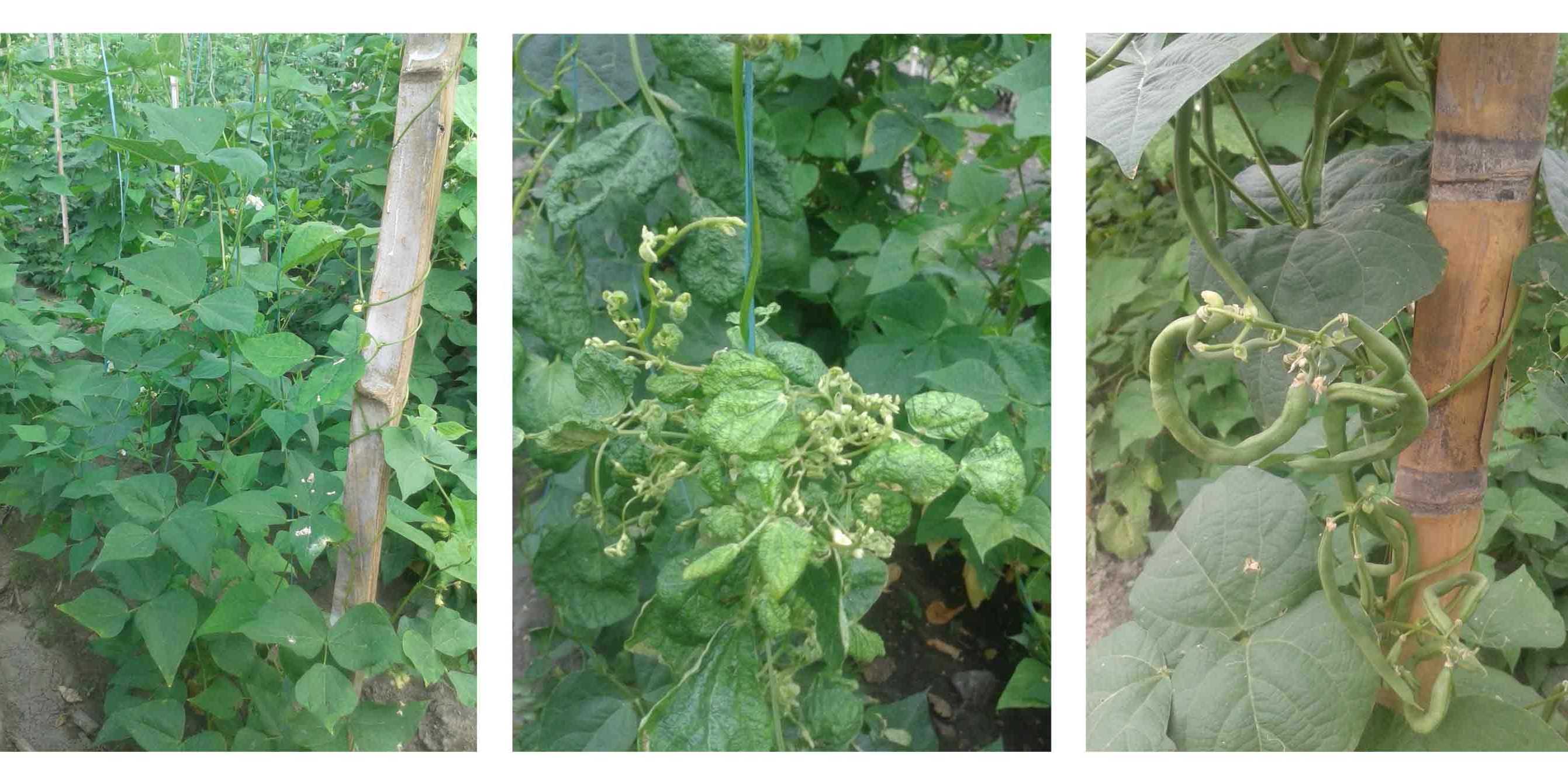Resistance to an emerging viral disease of common bean in Latin America
A candidate gene associated with resistance to the novel bean leaf crumple virus sheds light in the breeding efforts against this and other viral diseases threatening bean production.

Bean leaf crumple virus (BLCrV) is a recently characterized begomovirus infecting common bean in Colombia. It is transmitted by the whitefly vector Bemisia tabaci and causes devastating yield losses in susceptible cultivars. Current climate change scenarios suggest that the whitefly populations can reach higher altitudes and move towards more temperate regions, expanding the range of infestation to other countries in Latin America.
Management of the disease relies on the use of insecticides to restrict the whitefly advancement, but resistance to these products have started to evolve. A more sustainable solution to control the disease is deploying plant genetic resistance.
Scientists at the International Center for Tropical Agriculture (CIAT) in Colombia, in collaboration with researchers from ETH Zurich, have assembled a large panel of bean breeding lines to tackle the disease. This panel was tested for BLCrV resistance in multiple field trials over several years. By combining this data with DNA information, they found a single region on chromosome 7 of the bean genome being associated with resistance to the BLCrV disease.
This region contained a candidate gene encoding a Leucine-rich repeat receptor-like kinase (LRR-RLK) family member. Such LRR-RLK genes have been described to act as a receptor of viral molecules at the cell surface, leading to a rapid and non-specific response to a broad range of pathogens.
Using the allelic variation within the gene, one haplotype conferring resistance to the disease was identified. This haplotype was found in lines that were also resistant to other begomoviruses causing heavy yield losses in the Americas. This result provides evidence that breeding efforts for begomovirus resistance has contributed to the accumulation of alleles that also have a primary role in resistance against the novel BLCrV.
The DNA markers associated with the resistant haplotype can readily be used for marker-assisted selection, providing an efficient and rapid tool to improve BLCrV resistance in bean breeding programs.
Citation:
Ariza Suarez D, Keller B, Spescha A, Aparicio JS, Mayor V, Portilla Benavides AE, Buendia HF, Bueno JM, Studer B and Raatz B (2022) Genetic analysis of resistance to bean leaf crumple virus identifies a candidate LRR-RLK gene. The Plant Journal.
external pagehttps://doi.org/10.1111/tpj.15810
